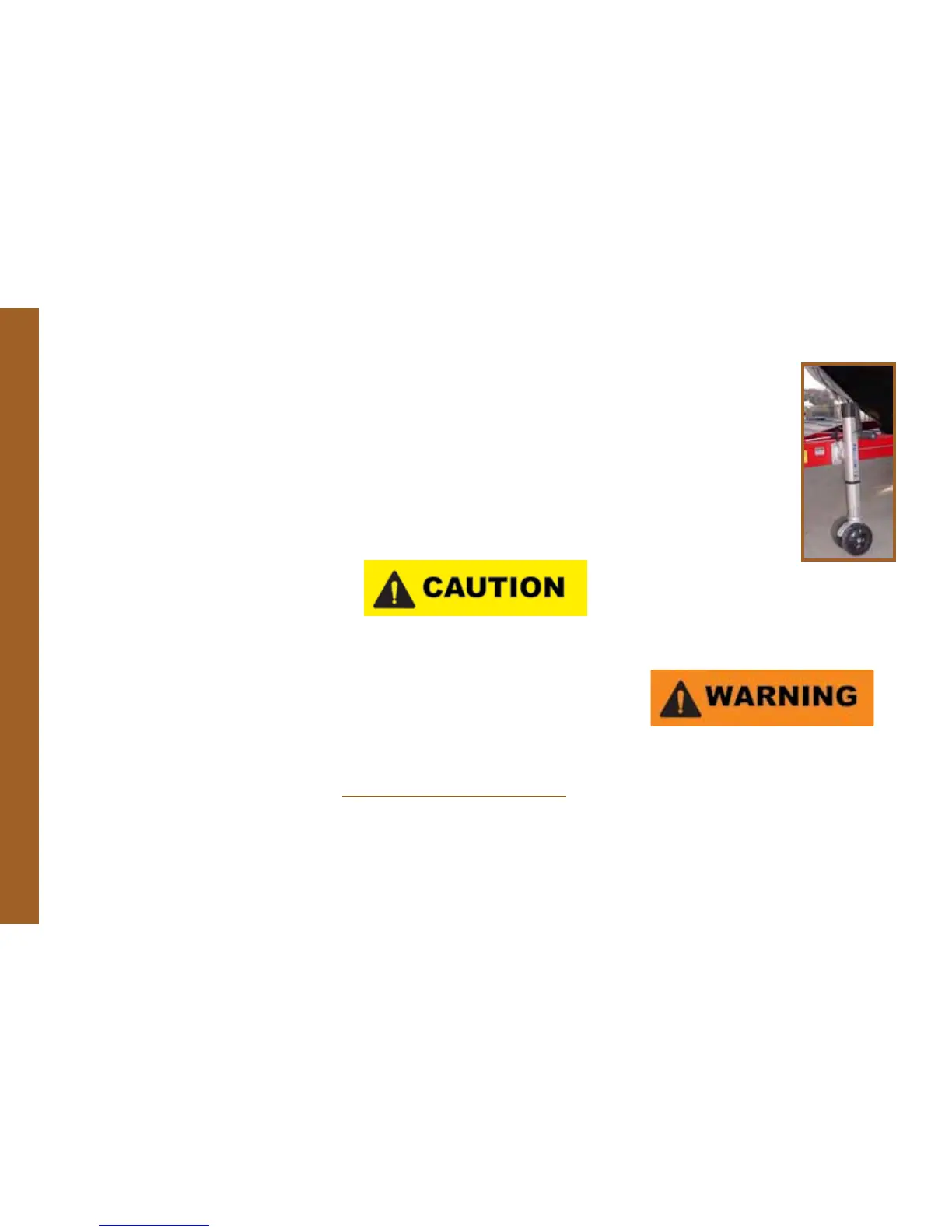nected from the towing
vehicle. Rotate the trailer
jack to the vertical posi-
tion and engage the lock-
ing pin before placing a
load on the trailer jack.
Like any mechanical
assembly, the trailer jack
requires maintenance
to continue functioning
properly. The drive gear
and the rack-and-pinion
should be greased, and the coaster and
wheel bearings should be oiled frequently.
Failure to swing up the trailer jack and
snap into towing position before towing
may result in damage to the trailer.
Failure to engage the locking pin may re-
sult in the collapse of the jack stand, which
could cause serious injury or death.
be sure the brake system is pressurized.
This is done by attempting to rotate a tire
around.
9. Push up on the safety release bracket to
ensure that the push rod is in the released
position.
10. After the bleeding is completed, recheck
the uid level in the master cylinder.
Fill the master cylinder reservoir to 1/8”
from the bottom of the threads on the
reservoir plug. Do not overll.
Important: Do not use brake fluid drained
from the brake system to refill the master
cylinder reservoir as such fluids contain
contaminants from the system that may
result in brake failure or costly repairs.
Trailer Jack
MasterCraft recommends using the
trailer jack to lift the coupling of a loaded
trailer from the hitch ball, and for limited
movement of the trailer when it is discon-
Page 7-24 2014 MasterCraft Owners Manual • MasterCraft Trailers
M A S T E R C R A F T T R A I L E R S
4. At the brake assembly, connect a trans-
parent bleeder hose to the bleed screw
tting on the wheel cylinder and sub-
merge the free end into a container par-
tially lled with brake uid. Do not re-
use this uid.
5. The rst person should stroke the push
rod slowly while holding the safety re-
lease bracket up. The second person
opens the bleed screw tting. Then
close the bleed screw tting BEFORE
the rst person SLOWLY releases the
push rod. Repeat this procedure until the
uid expelled from the bleeder hose is
free of air bubbles. Remember to always
tighten the bleeder screw before releas-
ing the push rod. During this procedure,
the master cylinder reservoir uid level
must be maintained at no less than half
full.
6. Repeat Steps 4 and 5 for the other brake,
as well as the brakes on the front axle of
tandem axles.
7. If installation is on a tandem-axle trailer,
repeat the bleeding procedure on the rear
axle brakes for a second time to assure
purging of all air in the system.
8. As a nal check after bleeding is com-
pleted, stroke the push rod and check to

